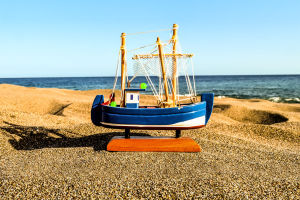
Welcome, Lykkers! Curious about when humans first dared to venture into the open waters? A recent archaeological discovery has turned back the clock on the history of navigation by tens of thousands of years.
Found on the Greek island of Crete, these findings shed new light on the remarkable adaptability and innovation of early human groups.
Join the journey into the distant past and discover how ancient people may have set the stage for one of humankind's most transformative achievements—maritime exploration.
An Unexpected Breakthrough on the Shores of Crete
A site rich in clues was uncovered near Plakias, in southern Crete, where a Greek-American archaeological team led by Thomas Strasser and Eleni Passagopoulou made a groundbreaking discovery.
The site, consisting of limestone terraces, small shelters, and caves, was once home to early humans over an extended timeline—from around 130,000 years ago in the Pleistocene to approximately 9,000 years ago in the Holocene.
Stone Tools That Tell a Bigger Story
More than two thousand carved stone fragments were found scattered throughout the area, mostly made from white quartz, quartzite, and siliceous rock.
Though small in size—ranging from just a centimeter to around twenty—these tools reveal significant information about the daily lives of those who created them. According to the research team, these finely shaped objects likely served as cutting tools, sharpeners, polishers, and boring instruments.
Their purpose, however, may have extended beyond simple utility. Experts suggest that the tools could have played a key role in crafting primitive watercraft, enabling early humans to explore coastal waters and island chains.
Rewriting the Timeline of Seafaring
This theory challenges previously accepted ideas about when humans began to navigate waterways. Earlier estimates suggested that open-water exploration began around 30,000 BCE. However, if these tools were indeed used to construct small vessels, then human ventures into the sea started nearly 100,000 years earlier than previously believed.
These early crafts likely took the form of "monoxyles"—hollowed-out logs that could float and carry people short distances. These vessels, shaped and refined using basic tools, may have been the first step toward organized sea travel.
Not Just a Coastal Stroll
What's remarkable is the nature of these early voyages. Unlike simple coastal navigation, the groups that reached Crete had to cross stretches of open water. While the Aegean Sea is dotted with islands that might have eased the passage, the effort still required more than random drifting. It demanded planning, courage, and boats that were reliable enough to carry people, tools, and supplies.
This shift from coast-hugging travel to venturing across open sea marks a significant advancement in human capabilities. It shows that long before recorded history, people were already adapting to complex environments and seeking new opportunities beyond the horizon.
The Journey of a Migrating Species
The community at Plakias likely didn’t originate there. Studies of ancient populations suggest that these early settlers came from far away, possibly migrating in stages from areas in modern-day Africa. Research indicates that migration waves may have started around 200,000 years ago, continuing through various routes that eventually brought some groups to the shores of Crete by 130,000 years ago.
These individuals were part of a broader pattern of movement, driven by survival, resource availability, and the search for stable living environments. Their journey to Crete was not an isolated event but a chapter in a long and complex story of human dispersal across continents and seascapes.
A Legacy Carved in Stone
The tools left behind in Plakias are more than archaeological artifacts. They represent the ingenuity and determination of a people who dared to challenge their boundaries. These early humans weren’t just surviving; they were exploring, building, and paving the way for future generations to cross seas, settle lands, and connect distant parts of the world.
Conclusion: A Salute to the First Mariners
The findings from Crete invite a renewed appreciation for the creativity and adaptability of our ancient predecessors. Long before maps, compasses, or written language, small human communities were already seeking new shores. Their courage laid the foundation for the vast maritime journeys that followed.
So, to all the Lykkers out there dreaming of distant horizons—take heart. The spirit of adventure flows through the ages, from the rocky shores of Plakias to the waves that still beckon us today.

